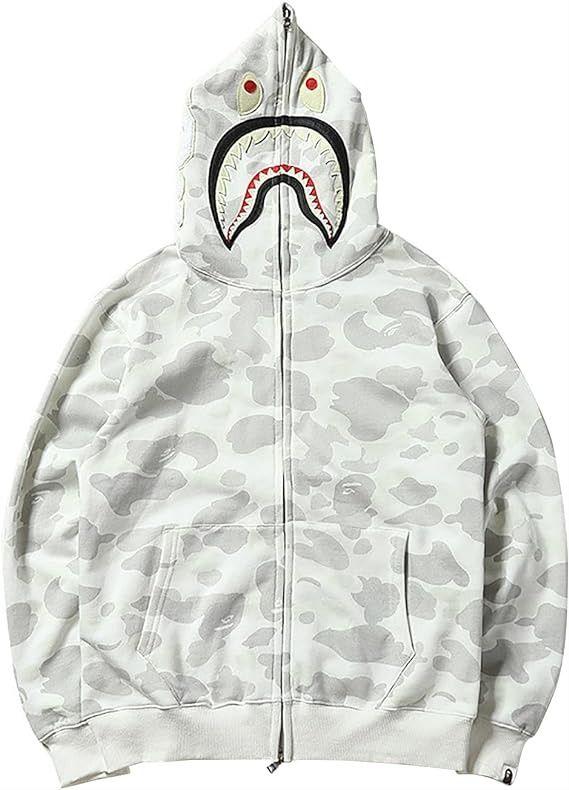In the ever-evolving world of fashion, few items have earned the cult status that the BAPE hoodie has. From the streets of Tokyo to the runways of Paris and the music videos of global rap stars, this piece of streetwear has cemented its place in pop culture and high fashion alike. But what makes the BAPE hoodie so special, and why does it continue to dominate the streetwear scene after decades? This article delves deep into the origins, design, cultural impact, and enduring appeal of this iconic garment.
The Origins of BAPE and Its Rise to Global Fame
The BAPE Hoodie was born out of A Bathing Ape (BAPE), a Japanese streetwear brand founded in 1993 by Nigo (real name Tomoaki Nagao). At the time, Tokyo was witnessing a cultural explosion in street fashion, and Nigo, inspired by Western hip-hop culture and Japanese design sensibilities, created a brand that would soon revolutionize the streetwear industry.
Initially, BAPE products were released in extremely limited quantities, creating a sense of exclusivity and desirability. This scarcity, combined with bold, standout designs, helped BAPE grow from a local phenomenon into a global powerhouse. The BAPE hoodie, in particular, quickly became the flagship product of the brand.
Design Elements That Make the BAPE Hoodie Unique
One glance at a BAPE hoodie and you immediately know it’s not your average sweatshirt. It is bold, loud, and unapologetically original. Several signature design elements make it instantly recognizable:
-
Shark Face and Full-Zip Design: Perhaps the most iconic version of the BAPE hoodie features a shark face on the hood that zips all the way up, covering the wearer’s face completely. This design is as much an art piece as it is a fashion item.
-
Camouflage Patterns: BAPE has its own unique camo print, known as "ABC Camo," which comes in various vibrant colorways. Unlike traditional military camouflage, BAPE’s patterns are colorful and artistic.
-
WGM and Ape Head Logos: “WGM” stands for “World Gone Mad,” and these varsity-style letters are typically found on the hood of the shark hoodie. The ape head, another signature logo, reflects the brand’s name and inspiration from the film Planet of the Apes.
These bold, graphic-heavy designs have helped the BAPE hoodie stand out in a sea of generic fashion.
Cultural Impact and Celebrity Endorsements
The BAPE hoodie became a global status symbol largely thanks to the support of influential figures in music and sports. In the early 2000s, American hip-hop artists such as Pharrell Williams, Kanye West, and Lil Wayne were often seen wearing BAPE gear, helping introduce the brand to Western audiences.
This endorsement from global celebrities catapulted the BAPE hoodie into mainstream consciousness. It wasn’t just a piece of clothing anymore; it became a symbol of affiliation with street culture, artistic rebellion, and exclusivity.
In more recent years, collaborations with brands like Adidas, Supreme, and Coach, as well as pop icons like Travis Scott and Drake, have further solidified BAPE’s place at the center of streetwear culture.
BAPE Hoodie as a Status Symbol
Owning a BAPE hoodie is more than a fashion choice—it’s a statement. Because of the brand’s history of limited releases and high price tags, wearing BAPE implies that you’re both fashion-savvy and willing to invest in exclusive style.
Many versions of the BAPE hoodie are considered collectibles. Certain rare designs resell for significantly more than their original retail price, with collectors and fans willing to pay a premium for vintage or limited-edition pieces. The resale market for BAPE has become an industry of its own, much like the sneaker market.
Craftsmanship and Quality
Another reason the BAPE hoodie continues to thrive is the attention to quality. Each hoodie is made with premium cotton, high-quality zippers, and reinforced stitching to ensure durability. The vibrant prints are created using advanced techniques that help them retain their color even after multiple washes.
While the price point may be higher than other hoodies on the market, the materials and craftsmanship justify the investment for many consumers.
Why BAPE Hoodies Remain Relevant Today
Fashion trends come and go, but BAPE hoodies have managed to maintain their relevance over the decades. Here are a few reasons why:
-
Nostalgia: For many, BAPE represents the golden era of early 2000s streetwear, and the brand’s consistency has helped retain long-time fans.
-
Innovation: BAPE is constantly experimenting with new colorways, collaborations, and design updates. This keeps the brand fresh and exciting, even for new generations of fans.
-
Cultural Integration: The hoodie is not just fashion—it has appeared in music videos, social media, films, and video games, helping it stay at the forefront of cultural consciousness.
Styling the BAPE Hoodie
Despite its bold appearance, the BAPE hoodie can be styled in a number of creative ways:
-
Streetwear Look: Pair it with distressed jeans, sneakers, and a cap for a classic urban outfit.
-
Layered High Fashion: Combine with neutral-toned outerwear and luxury accessories to balance out the loud design.
-
Athleisure Vibe: Match it with joggers and athletic shoes for a comfortable, sporty feel.
The hoodie’s versatility means it can be a centerpiece or a complementary element, depending on how you wear it.
The Future of the BAPE Hoodie
As streetwear continues to merge with luxury fashion, the BAPE hoodie is likely to maintain—if not expand—its appeal. The brand’s ongoing commitment to innovation, quality, and cultural relevance ensures that it won’t fade into obscurity anytime soon.
Moreover, as sustainability and ethical production become more important in fashion, BAPE has the opportunity to lead by example and evolve with the times, potentially attracting an even broader customer base.
Final Thoughts
The BAPE hoodie is more than a piece of clothing—it’s a cultural icon. With its unique design, rich history, and strong influence on streetwear and pop culture, it has earned its place as one of the most recognizable and coveted garments in modern fashion.

